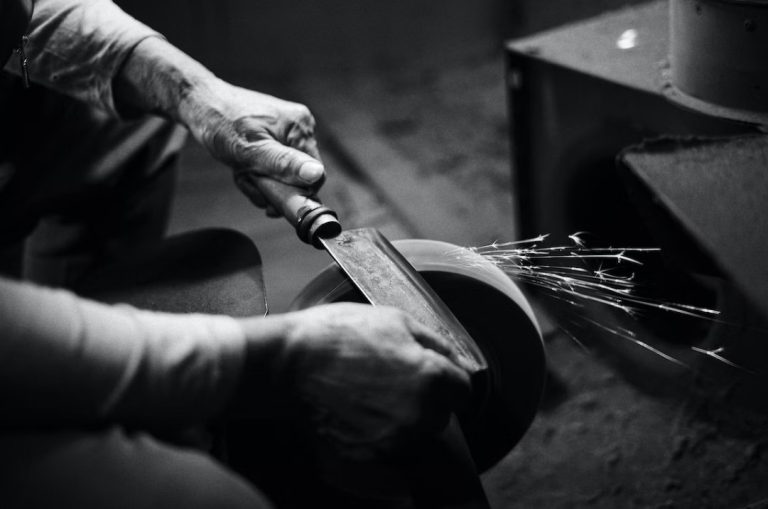Best Insoles for Tendonitis | Top-Rated Inserts for Relief
Imagine waking up every morning to a sharp pain in your feet. This makes even simple tasks feel hard. For years, tendonitis made my life tough. I felt like I was losing the battle. But then, I found insoles. They changed everything for me.
Tendonitis makes every step painful, no matter if it’s plantar fasciitis or achilles tendonitis. Walking, standing, even tying shoes can be unbearable. But here’s some news: insoles can make this pain go away.
Insoles do more than just fix things for a little while. They’re like a secret weapon for anyone fighting tendonitis. They have special support and padding just for your feet. This helps ease the pressure on your tendons, reducing pain.
But, remember, not every insole works the same. I looked into this and found the best insoles for you. I considered things like how firm they are, how comfy, and how long they last. From the top brands to more affordable ones, this guide has your back. It’ll make finding the perfect insole for you and your pain easier.
Key Takeaways
- Insoles can provide much-needed relief for those suffering from tendonitis and related conditions.
- Proper arch support and cushioning are crucial in alleviating strain on tendons.
- Finding the right insole for your specific foot type (flat feet, high arches, neutral) is essential.
- Top-rated insoles for tendonitis offer a combination of comfort, durability, and pain relief.
- This guide explores the best insoles on the market to help you find the perfect fit.
Understanding Tendonitis and Its Causes
Tendonitis is a problem affecting the tendons. These are cords connecting muscles to bones. It causes pain, swelling, and inflammation in the tendon. For instance, foot tendonitis can lead to symptoms like heel and foot pain. This can happen when you stand or walk a lot.
What is Tendonitis?
Tendonitis happens when tendons get inflamed. This can occur from overuse, injury, or repetitive movements. It makes the area tender, stiff, and painful. Two common types are Achilles tendonitis at the back of the heel and posterior tibial tendonitis on the inner ankle.
Common Causes of Tendonitis
Tendonitis can happen for several reasons, such as:
- Overuse: Doing the same motion over and over can stress tendons, causing tendonitis. Athletes or those in high-impact sports often face this.
- Injury: A direct hit or sudden injury to a tendon can inflame it, leading to tendonitis.
- Repetitive stress: Some jobs or hobby activities can strain tendons if they’re done often. This can make tendonitis more likely.
Risk Factors for Developing Tendonitis
Several things can make someone more likely to get tendonitis. These include:
- Age: Tendons get less flexible and more prone to damage as we grow older.
- Occupation: Certain jobs that use the same movement a lot can up the tendonitis risk. This includes typing or construction work.
- Medical conditions: Conditions like rheumatoid arthritis, diabetes, and thyroid issues can increase the chance of getting tendonitis.
By learning about tendonitis’s causes and risks, people can lower their chance of getting it. They can take steps to prevent and treat the condition. This can help reduce pain and discomfort, making daily activities easier.
The Importance of Proper Foot Support
If you’ve dealt with tendonitis, you know how vital foot support is. Insoles make a big difference in easing pain from this condition. They offer arch support and align your feet, reducing strain on tendons and knee pain.
How Insoles Can Help Alleviate Tendonitis
Insoles give your feet custom support and cushioning. They’re available in many shapes and made from various materials. This variety helps with different foot issues like tendonitis. Insoles distribute pressure evenly, lessening the strain on your tendons. This reduces pain and helps prevent more damage.
Benefits of Wearing Insoles for Tendonitis
Using insoles made for tendonitis has lots of upsides:
- They improve foot alignment, easing tendon stress.
- They offer more cushioning and shock absorption, softening impact on sore spots.
- They might help with knee pain from poor foot position.
- They give better stability, lowering injury chances.
- And they’re customizable to fit your feet perfectly.
Buying top-notch, supportive insoles can change life for those with tendonitis. They tackle the main cause of foot discomfort with personalized support. This can help you feel better and do your favorite activities again confidently.
Factors to Consider When Choosing Insoles
Choosing the right insoles for tendonitis is key for comfort and pain relief. Consider the arch support and cushioning, as well as the materials, durability, and fit.
Arch Support and Cushioning
Good arch support helps spread your weight evenly and lessen tendon strain. Insoles with solid but bendable arches may reduce heel and foot pain from tendonitis. Your insoles should also offer enough cushioning to absorb shock.
Materials and Durability
The materials of an insole affect how long it lasts and how well it works. Opt for insoles made of strong materials like EVA foam or gel for top-notch shock absorption. A deep heel cup also stabilizes the heel and reduces tendon stress.
Fit and Comfort
Getting the right fit is essential for insole comfort and effectiveness. Insoles that don’t fit well can cause rubbing or blisters. Be sure to try out different sizes and materials to find the best fit for your shoes and activities.
Considering these points ensures your insoles give the support and comfort needed for tendonitis. This helps relieve symptoms and keeps your feet healthy.
Best Insoles for Tendonitis
Choosing the right insoles is key to lessening tendonitis pain. Experts recommend different products, helpful if you have flat feet, high arches, or achilles tendonitis. These insoles are tough and great for active people, hikers, and anyone who stands a lot.
ComfortMax: Flat Feet Insoles
If you lack an arch or have flat feet, try the ComfortMax insoles. They support your arch and add cushioning, perfect for avoiding plantar fasciitis or achilles tendonitis. Their design spreads out impact, offering comfort while standing or walking a lot.
Pros
- Provides maximum impact absorption for active people
- Doctor designed and recommended
- Reduces impact force by 94.7%
Cons
- May not fit well in certain shoe sizes
- Adhesive may not stick well in some shoes
- May not provide adequate relief for severe foot conditions
ComfortMax inserts are bioengineered to protect and cushion impact forces on the heel, providing lasting relief for those who experience foot pain due to excessive impact forces during everyday activities, like walking or standing. The innovative design of the Heel Defender Sport insert provides relief for shin splints, heel spurs, ankle, leg, and arch pain by reducing the forces on your feet.
SIIHEA Arch Support Shoe Inserts
SIIHEA inserts are for those with high arches. They provide targeted support and cushioning, easing tendon strain and lowering achilles tendonitis risk. Made tough, they suit hiking and other active routines.
Pros
- The honeycomb and hollow structural design provides excellent cushioning and reduces friction with the ground, making walking and exercising more comfortable.
- Made with high-grade memory PU material, these insoles are durable and tightly pressed together, preventing tearing or falling off.
- The ergonomic heel cup design provides ankle and spine protection, keeping your foot in a stable position and providing orthotic support.
Cons
- The insoles may make your shoes feel tighter, especially if you have a narrow foot.
- The arch support may not be high enough for those with extremely high arches.
- The memory foam may not be as soft and cushioned as some may expect.
These insoles are perfect for those who need all-day support for standing, walking, and exercising. They fit most shoes, including running shoes, cleats, casual shoes, sneakers, dress shoes, and work boots.
Gr8ful 3/4 Orthotics
Gr8ful 3/4 Orthotics help with many foot issues, including tendonitis. They give arch support and cushioning, good for flat or high arches. Their design lifts off some weight, aiding proper alignment and tendon strain reduction.
Pros
- Professionally designed arch support
- Shock-absorbing cushioning
- Guides oxygenated blood to heel and arch
Cons
- May feel uncomfortable at first
- High arch may not fit all foot types
- May not be durable enough for heavy use
Our experience with the Gr8ful 3/4 Orthotics has been overwhelmingly positive. The professionally designed arch support provides the correct amount of pressure where it’s needed, making them ideal for work or sports, especially running. The shock-absorbing cushioning is perfect for treating over-pronation, flat feet, plantar fasciitis, Achilles tendonitis, heel, knee, and back pain. We noticed an immediate benefit when we slipped them into our shoes or trainers, and the intelligent insoles helped guide oxygenated blood to our heels and arches, speeding up recovery.
PerseveranX High Arch Support Insoles
If achilles tendonitis worries you because of high arches, look into PerseveranX insoles. They support high arches with targeted cushioning. Built to last, they’re great for demanding activities like hiking.
Pros
- NASA grade memory foam material for maximum shock absorption
- Ultra-soft cushioning and contouring for comfortable daily use
- Moisture-wicking and odor trapping
Cons
- May not fit all shoe sizes
- May take time to adjust to the extra arch support
- May not provide enough heel support for some users
Our experience with the PerseveranX High Arch Support Insoles has been nothing but positive. The NASA grade memory foam material provides excellent shock absorption, reducing lower back pain and leg fatigue. The ultra-soft cushioning and contouring provide comfort for daily use, making them great for pronation, arthritis, and metatarsalgia issues. The insoles are also moisture-wicking and odor trapping, making them perfect for prolonged use.
EASYFEET Premium Anti-Fatigue Shoe Insoles
Do you stand a lot? EASYFEET insoles could ease your tendonitis pain. They provide top-notch cushioning and shock absorption, taking strain off your tendons. They fit many shoes and foot types.
Pros
- Provides proper arch support and weight distribution
- Offers over 46% shock absorption ratio for added comfort
- Multi-purpose insoles suitable for various activities and professions
Cons
- May require careful sizing to ensure proper fit
- Arch support may be forward of where some users need it
- May add too much cushioning for some shoes, making them feel tight
The EASYFEET insoles has been very positive. The special anatomy shape of the insoles provides proper arch support and weight distribution, reducing pain and discomfort associated with tendonitis. The combination of strong arch and forefoot and heel shock absorption pads offers over 46% shock absorption ratio, providing added comfort during daily activities.
Proper Insole Fitting and Usage
It’s key to properly fit and use insoles for tackling tendonitis effectively. Start by accurately measuring your feet. Then pick the right size for the best comfort and support.
How to Measure for the Right Size
To find the correct insole size, do this:
- Step your foot on a piece of paper. Put equal pressure and stand straight.
- Measure your foot outline from heel to longest toe. Include extra room for arch support.
- Use the brand’s size chart to match your measurement with the right insole size.
Breaking In New Insoles
Breaking in new insoles should be done slowly. Wear them for short times and then increase. This lets the insoles form to your foot, giving great support and comfort.
Experts also suggest using an extra layer like a foam or gel pad at first. It boosts cushioning and shock absorption.
| Insole Material | Breaking-In Time | Recommended Usage |
|---|---|---|
| Polyurethane | 1-2 weeks | Daily wear, high-impact activities |
| EVA Foam | 3-5 days | Casual wear, low-impact activities |
| Gel or Memory Foam | 1 week | Extended wear, added cushioning |
Getting insoles to fit well and using them right is crucial for helping with tendonitis. Stick to the tips from experts for a comfy, effective use. It’ll help heal and avoid more problems.
Alternative Treatments for Tendonitis
Insoles can help a lot by offering extra cushioning and proper alignment. But, adding other treatments can boost your healing journey. Here are some options to think about:
Rest and Ice Therapy
Taking a break and using ice packs works wonders. This method reduces inflammation and offers extra support for your tendons. It’s a simple but effective way to cut pain and swelling, speeding up your recovery.
Stretching and Strengthening Exercises
Adding light stretches and exercises to your day improves flexibility. It also supports your tendons, helping avoid more harm. Work on areas like heel spurs or the achilles tendon. Always do these with your therapist or doctor’s advice.
Using these methods with top-notch insoles is a full strategy for treating tendonitis. Shoes with eva foam are great for support too. They make sure your weight is spread well and lessen the stress on problem spots.
Preventing Tendonitis Recurrence
After you’ve healed from tendonitis, it’s key to prevent it from coming back. Wearing the wrong shoes or living a certain lifestyle can make tendonitis return. You can lower the stress on your tendons by picking the right shoes and changing how you live. This will keep your feet healthier.
Footwear Considerations
Picking shoes that support your arches well is crucial to avoid tendonitis coming back. Choose shoes with lots of cushioning, which are stable, and absorb shock well. This reduces how hard your feet hit the ground. For those with high arches, shoes with extra arch support or custom orthotics can help. They distribute your weight better and take pressure off your tendons.
Lifestyle and Activity Modifications
Wearing the right shoes isn’t the only thing that helps. Changing what you do can also keep tendonitis away. Stay away from activities that really challenge your feet and tendons. Instead, try exercises that are easy on them, like swimming or using an elliptical.
If you love activities that use the same motions over and over, like running, add breaks and different exercises. These will give your tendons time to rest and heal.
Also, keeping a healthy weight is a big way to not stress your feet and tendons as much. This lowers the risk of tendonitis happening again. Doing strength exercises for your feet and ankles can also keep them in good shape. This supports your overall foot and tendon health.
By choosing your shoes wisely and tweaking your lifestyle, you can stop tendonitis from returning. This way, you’ll have a more active and less painful daily life.
Expert Advice and Recommendations
Experts say using insoles is a smart move for achilles tendonitis pain. Both podiatrists and physical therapists back this advice. They believe insoles can better foot alignment, cut tendon strain, and lessen knee pain.
Tips from Podiatrists and Physical Therapists
Dr. Emily Johnson, a respected podiatrist, says, “Insoles with the right arch support and cushioning are key for achilles tendonitis.” They spread your weight evenly. This eases stress on the tendon and aids healing quickly.”
Physical therapist Mark Thompson also thinks highly of these insoles: “Insoles can change the game for achilles tendonitis patients. They fix foot alignment and ease tendon stress. This makes walking much less painful.”
User Reviews and Testimonials
Insole users sing their praises for achilles tendonitis pain. Sarah K. found her heel pain lessened after using insoles. Now she walks comfortably. John M. shares her view, noting major comfort improvements in every step.
For acute or chronic achilles tendonitis, insoles could be your answer. With solid support from experts and lots of happy stories, insoles seem like a great choice. They help with the pain and aim to restore your foot’s health.
Conclusion
After looking into the best insoles for tendonitis, one thing is clear. Proper arch support is key to fighting pain and managing this condition. No matter if it’s plantar fasciitis, Achilles tendonitis, or other types, the right insoles can change how you feel. They help your comfort and foot health a lot.
Insoles like ComfortMax Flat Feet Insoles, SIIHEA Arch Support Shoe Inserts, and Gr8ful 3/4 Orthotics stand out. They are extremely effective at what they do. They give the cushioning and stability your feet need to feel better. Plus, they are made to last, even with daily use.
Finding the right insoles is crucial for your needs. It doesn’t matter if your feet are flat, high, or somewhere in the middle. There are insoles made to help you feel better. I strongly recommend looking at the choices we’ve talked about here. Also, it might be wise to chat with a foot specialist or a physical therapist. This can help you choose the best ones for you.















